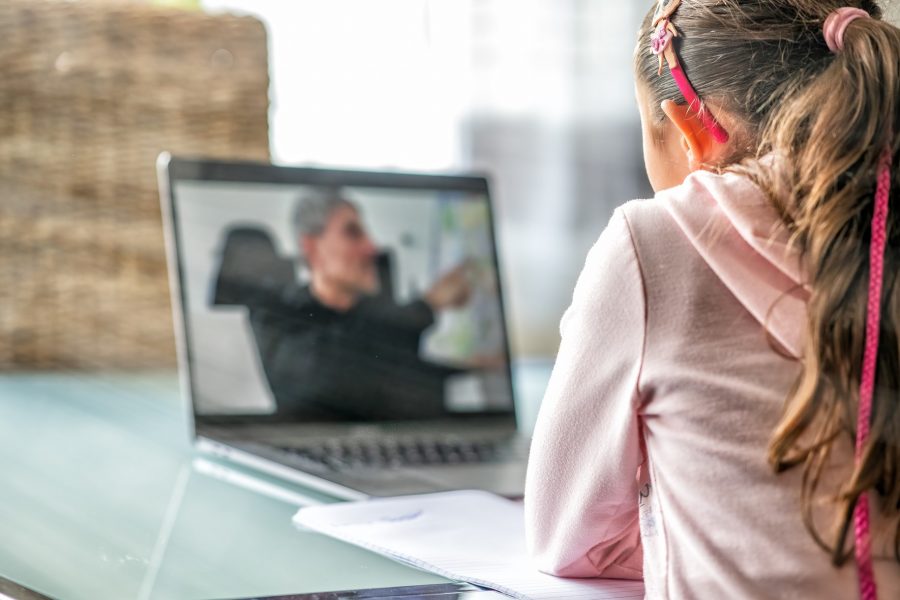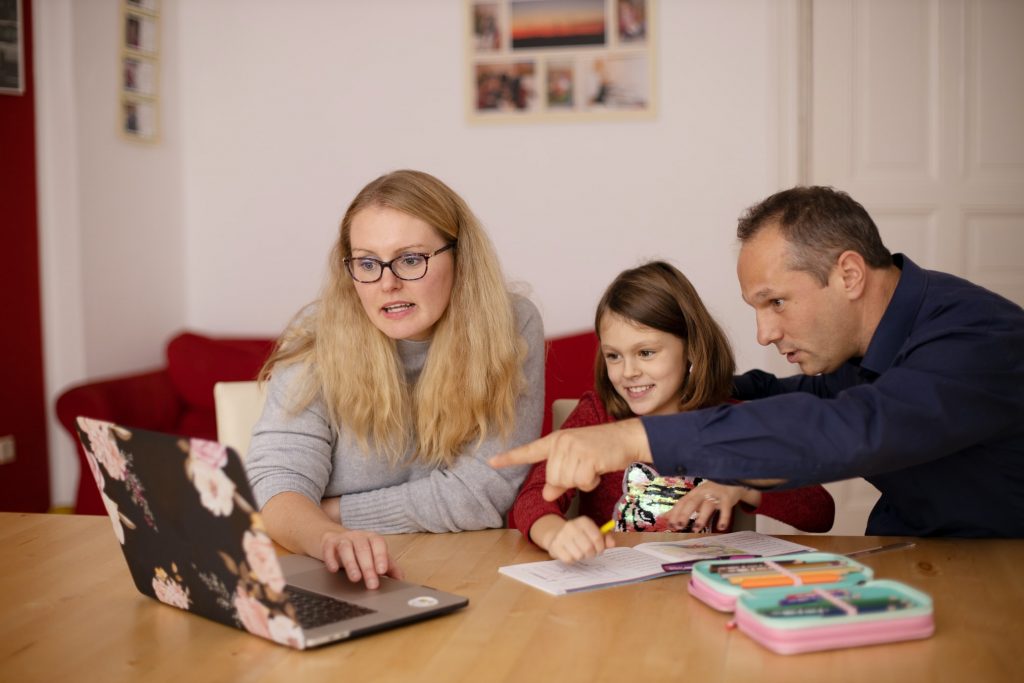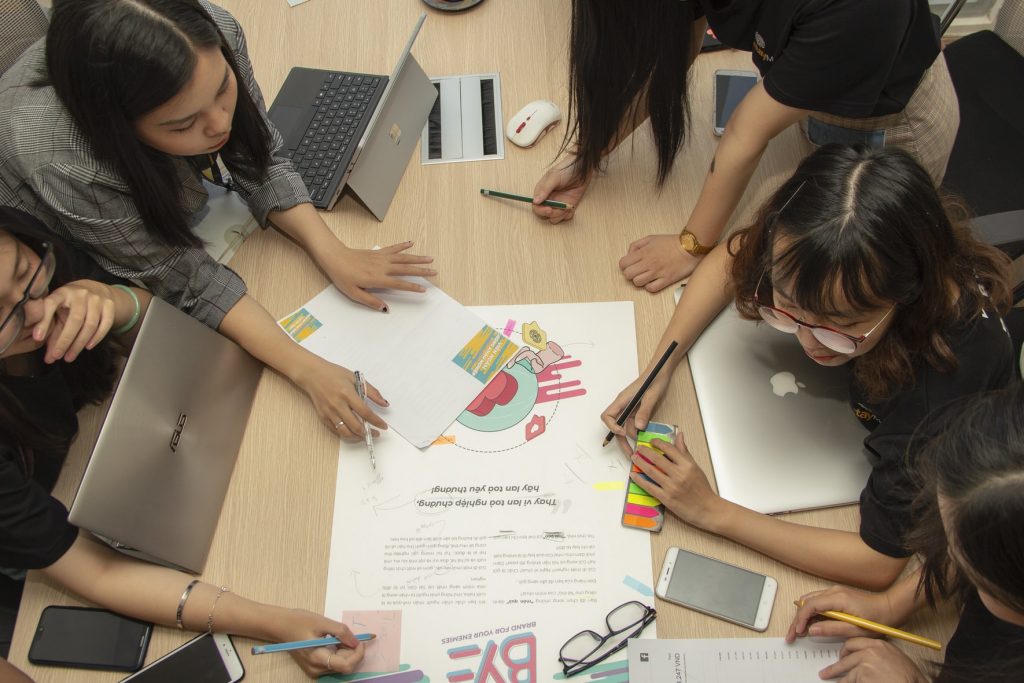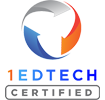
When the pandemic unexpectedly interrupted the 2019-2020 school year, schools and districts quickly made changes to their learning models to serve their students and communities. The rapid changes in procedures and new technology resulted in a wide variety of online and blended learning models across schools and districts – and left many teachers feeling overwhelmed.
Moving forward, and with the pandemic still looming, several schools and districts are still looking toward blended and online learning models to support their students and families. But a major concern remains: how can we ensure our teachers are well-equipped and empowered in these environments?
Schools and districts can support their teachers in blended and online learning environments by empowering them with effective professional learning, giving them the proper tools to engage with their students, and connecting them with parents to build a community.
Empower teachers with relevant and personalized professional learning for blended and/or online instruction
The range of experience teachers may have with blended and online learning varies greatly. In terms of the technology required for such models, some teachers may be extremely tech savvy while others prefer to limit the use of technology in their practices. When transitioning to blended
or online learning models, whether temporary or permanent, schools and districts should consider all levels of experience and create personalized professional learning opportunities to support their teachers.
Schools and districts should not feel like they have to accomplish this on their own. Professional learning resources specifically tailored to online and blended learning already exist! And with organizations like iLearn Collaborative, teachers can complete personalized pathways for their learning, which takes into account their comfort level with technology and the new(er) learning models.
Equip teachers with the tools to engage their students and build strong relationships
 No matter what kind of model a school or district utilizes, student and teacher engagement is key to success. From understanding the individual needs each learner has, to motivating them day in and day out, the relationship between teachers and their students can be one of the biggest influencers in both academic success and social emotional wellbeing. But how can a school equip their teachers to do this?
No matter what kind of model a school or district utilizes, student and teacher engagement is key to success. From understanding the individual needs each learner has, to motivating them day in and day out, the relationship between teachers and their students can be one of the biggest influencers in both academic success and social emotional wellbeing. But how can a school equip their teachers to do this?
In addition to strategies they can take away from effective professional learning for online and blended learning, schools and districts should carefully consider the tools they’re giving teachers overall. Are teachers expected to transfer their regular instruction to an online model using video conferencing software? What other methods of communication are encouraged – and do teachers have the tools to accomplish this? With the right resources, such as real-time messaging and/or texting systems, teachers can reach out to and communicate meaningfully with their students on an individual basis.
When teachers are effectively prepared for teaching in online and blended learning environments, they can spend less time stressing about the logistics of their model, and more time diving into content and personalizing learning. Equipping instructors with best practices and relevant knowledge can allow teachers of all experience levels to feel more comfortable in this new environment and do what they do best: teach.
Connect teachers and parents so they can support learners in all aspects
Parent involvement has a positive impact on student learning whether they’re in a traditional brick-and-mortar, blended, or online learning setting. With the pandemic and at-home learning, many parents became involved for the first time and others became involved at much deeper levels.

Many parents, although at home, may still be working. When connecting teachers with parents, families, or learning coaches it’s important to give them resources and training so they can offer different methods and levels of support. If the parent or learning coach is working and has multiple learners at home, the challenges increase as they try to effectively support each child. Regardless of the exact situation, effective and timely communication with teachers is essential.
Give teachers different ways to reach out. This can be through announcements, emails, text messages, phone calls, translation tools, or even moving to a digital curriculum that allows for parents to log into their own accounts and observe their students’ progress.
For teachers communicating in fully virtual environments with parents and learning coaches, it may also be helpful to equip them with the appropriate sample scripted messages to use. Consider some of the

common questions or challenges they may face – such as forgotten passwords or log-ins, the desire to retake an assignment that may be fully digital, or how to navigate an LMS. Giving the teachers answers to such frequently asked questions can open up more fruitful conversations down the line and eliminate early frustrations.
No matter what, every learning model has its challenges. But when teachers are given the proper tools to engage with their students, different ways to connect with parents and learning coaches, and are empowered with relevant and personalized professional learning, they will succeed in blended and online learning environments.

About the Author:
Judy Perez is a recognized national expert in blended and online learning contributing to research for the U.S. Dept. of Ed, iNACOL, State of Colorado, and numerous publications. Prior to founding the iLearn Collaborative, she directed district-wide blended learning at Jeffco Public Schools and led their online school from turnaround status to Performance accreditation. Judy has consulted for the Secretary of Education Manizales, Colombia, S.A., Universidad Nacional de Colombia, The ASCENT Initiative, and other international agencies. She most proud of her role as mom of blended learners.





